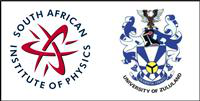Speaker
Abstract content <br> (Max 300 words)
The thesis involves the study of young population B type Cepheid
variable stars using seismic waves to study their oscillation modes. The
goal is to identify the modes associated with the frequencies over the
ranges of the quantum numbers n and l so that deductions can be made
about the internal structure and composition of the star. For the
Cepheids there are two types of pulsation modes p, or pressure modes,
and g, or gravity modes, each of which penetrate to dierent depths in
the star thus probe conditions in the outer and inner parts of the star.
Time series data collected from observations at Sutherland will be Fourier
analyzed and modes identied from the frequency peaks in the spectrum.
In the theoretical model, the amplitude ratios are calculated for dier-
ent values of the degree l of the spherical harmonic and wavelength
and the computed values then compared with amplitude ratios obtained
from observational measurements at the same wavelengths. The theoret-
ical model includes information about metallicity, temperature, density,
pressure and the known atmospheric parameters with regards to the hy-
pothetical Cepheid star. Once the theoretical amplitudes are matched
with the observational amplitudes, within a certain error bar, then the
mode l can be identied. My goals will be to analyze the observed pulsa-
tions in certain Cepheid stars to obtain information about their physical
parameters such as size and evolutionary state.
Apply to be<br> considered for a student <br> award (Yes / No)?
Yes
Level for award<br> (Hons, MSc, <br> PhD)?
MSc
Main supervisor (name and email)<br>and his / her institution
Professor Medupe
Would you like to <br> submit a short paper <br> for the Conference <br> Proceedings (Yes / No)?
Yes

